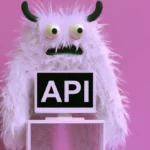AI Code Review is revolutionizing the software development industry. By harnessing the power of artificial intelligence via advanced analytics consulting services, developers can now use AI helper bots to analyze and evaluate their software code with unprecedented efficiency and accuracy. Plus, the rise of AI vetting in software engineering.
These AI helper bots have vulnerability detection capabilities, making testing more effective. This innovative approach helps the developer identify bugs, vulnerabilities, and areas for improvement in code quality through effective debugging and testing for vulnerability detection.
Gone are the days of relying solely on manual code reviews for developers. Testing and vulnerability detection have become essential in the industry, as they can save time and minimize human error. AI code review is a literal game changer for testing and debugging. It streamlines the process by automating the code analysis, providing developers with valuable insights in a fraction of the time. AI code review enhances the overall effectiveness of traditional manual reviews. It can detect patterns, anomalies, and potential risks, making it a valuable tool for developers.
Developers can optimize their coding practices by leveraging actionable code improvements, ensure higher-quality software releases, and ultimately deliver better products to their customers. Code lines can be refined based on review feedback, resulting in more efficient and effective development processes.
Understanding the Concept of AI Code Review
AI code review utilizes machine learning algorithms to analyze source code automatically. This process identifies coding errors, security vulnerabilities, and adherence to coding standards. The ultimate goal is to enhance software quality, maintainability, and overall performance by implementing actionable code improvements and insightful code change suggestions. These key features and capabilities will significantly contribute to the desired outcomes.
Machine Learning Algorithms Enhance Code Review
Machine learning algorithms like Coderabbit are essential for AI code review. These algorithms serve as an assistant to analyze and evaluate code. They possess important features that enhance the code review process.
These algorithms, developed by coderabbit, have key features that enable them to learn from patterns and data. With this knowledge, they can identify potential issues in the codebase. The image source for this information is also available.
Identifying Coding Errors
One of the critical features of Coderabbit is its ability to conduct AI code reviews, which helps identify coding errors or bugs within the source code. These code errors, including syntax and logic flaws, can lead to runtime issues or unexpected behavior. To prevent such problems, it is essential to make actionable code improvements. By reviewing and optimizing the code lines, you can ensure that your coderabbit runs smoothly and efficiently. By automating this process with AI-based tools, coderabbit developers can quickly pinpoint and rectify these errors before deployment. This automation is one of the critical features of coderabbit, which provides a reliable and efficient solution for identifying and fixing mistakes. Coderabbit also offers a built-in image source feature, making it easier for developers to find and use images in their projects.
Uncovering Security Vulnerabilities
Security is a critical aspect of software development, and AI code review from coderabbit can help uncover potential security vulnerabilities in the codebase. The image source for this blog post highlights the features of AI code review in enhancing software security. It can detect common security pitfalls like SQL injection attacks, cross-site scripting (XSS) vulnerabilities, or insecure authentication mechanisms. The AI code tools used in this process ensure accurate and efficient detection. Additionally, the image source for the AI code tools provides reliable and up-to-date information for enhanced security measures. Developers can proactively address these weaknesses and fortify their applications against potential threats by identifying them early. Additionally, developers need to attribute the image source in their applications correctly.
Adherence to Coding Standards
Maintaining consistent coding standards across a project is essential for collaboration, long-term maintainability, and code integrity. It is vital to have a standardized approach to coding that everyone on the team follows. This helps to avoid confusion, reduces errors, and makes it easier for team members to understand and work with each other’s code. One way to ensure consistency is by using an image source, such as a style guide or coding conventions document, that outlines the agreed-upon standards for the project.
This serves as a reference for developers and helps them adhere to the AI-based tools that can analyze the source code against predefined coding standards or style guides. They can use AI code tools to highlight deviations from these standards, such as inconsistent formatting or naming conventions. Additionally, they can provide the image source for the blog post. This helps ensure all team members adhere to a unified set of guidelines throughout development, including utilizing image sources and AI code tools.
Actionable Insights for Developers
AI-based tools used in code review provide actionable insights for deve
lopers during the review process. Instead of simply flagging issues without context, these tools offer suggestions and recommendations for resolving the identified problems. For instance, they can propose code refactoring techniques or suggest alternative approaches that improve performance or security. This empowers developers to make informed decisions and write cleaner, more efficient code.
Streamlining the Review Process
Code reviews are integral to software development but can be time-consuming and resource-intensive. AI code review helps streamline this process by automating certain aspects and reducing manual effort. Developers can focus on critical areas requiring human expertise by automatically analyzing the codebase for potential issues. This significantly speeds up the review process using AI code tools without compromising quality.
Limitations of AI Code Review
While AI-based tools offer numerous benefits in code review, it is essential to acknowledge their limitations. These tools rely heavily on patterns and historical data to identify issues in the source code. However, AI code tools may not always capture complex logic errors or subtle vulnerabilities that require a deep understanding of the application’s context. Human intervention is necessary to ensure comprehensive and accurate review, especially when using AI code tools.
Benefits and Importance of AI Code Review
If you have no data engineering practices internally jumping to AI code review may be off the radar for today. We highly recommend using our data engineering consultants to begin streamlining your data and operationalizing it for the future of data science models, machine learning, and benefitting from AI Code Review. Now, let’s discuss the importance of AI Code Review and benefits.
Reducing Human Error
AI code review can potentially revolutionize the software development process by automating repetitive tasks in the reviewing process. This automation reduces human error, which is often unavoidable when manual code inspections are performed. By leveraging machine learning algorithms, AI can analyze and identify potential issues, such as bugs or vulnerabilities, with a higher level of accuracy than humans alone.
Improved Productivity
One of the significant benefits of AI code review is its ability to save time spent on manual inspections. Developers can spend countless hours manually reviewing lines of code for errors or inconsistencies. However, with AI-powered tools, this process can be significantly expedited. These tools can quickly scan and analyze large volumes of code, highlighting potential issues and suggesting improvements. By automating these tasks using AI code tools, developers can focus their time and energy on more critical aspects of software development.
Early Detection of Issues
With continuous integration and the increasing use of AI code tools in software development workflows, early detection of issues before they impact production environments is crucial. AI code review plays a vital role in identifying potential problems during the development phase. By integrating AI into the continuous integration pipeline, developers can receive real-time feedback on their code quality and address any issues promptly.
Enforcing Coding Best Practices
Maintaining consistent coding standards across a team or organization can be challenging without proper enforcement mechanisms. AI code review tools help ensure that coding best practices are followed consistently throughout development. These tools can automatically check for adherence to style guidelines, naming conventions, and other coding standards defined by the team or industry. By enforcing these practices, collaboration among team members is enhanced as everyone follows a standardized approach to writing clean and maintainable code.
Increased Code Quality
By leveraging AI algorithms to perform comprehensive code analysis, developers can improve the overall quality of their software projects. With automated testing capabilities integrated into AI-powered tools, developers can identify potential bugs or vulnerabilities that may have been overlooked during manual review. This results in a more robust and reliable software that meets the highest quality standards.
Enhanced Security
Security is a critical aspect of software development, and AI code review can significantly contribute to ensuring the security of applications. By analyzing code for potential vulnerabilities or weaknesses, AI tools can help detect and prevent security breaches before they occur. These tools can identify common coding patterns that lead to vulnerabilities and suggest remedial actions to mitigate risks. By incorporating AI code review into the development process, organizations can strengthen their security posture and protect their applications from potential threats.
Tools Used in AI Code Review
Static Analysis Tools
Static analysis tools play a crucial role in AI code review by scanning the source code without actually executing it. These tools help identify syntax errors, unused variables, or security vulnerabilities. By analyzing the code statically, these tools can catch problems early on and provide developers with valuable feedback to improve their code quality.
One significant advantage of static analysis tools is their ability to analyze large codebases quickly. They can scan thousands of lines of code in seconds, making them highly efficient for detecting common programming mistakes. These tools can enforce coding standards and best practices, ensuring the codebase remains consistent and maintainable.
However, it’s important to note that static analysis tools may produce false positives or negatives. False positives occur when the tool flags an issue that is not a problem, leading to wasted time and effort for developers. On the other hand, false negatives happen when the tool fails to detect an actual issue, potentially resulting in bugs or vulnerabilities slipping through unnoticed.
Dynamic Analysis Tools
In contrast to static analysis tools, dynamic analysis tools focus on executing the program while monitoring its behavior for bugs or vulnerabilities. These tools provide insights into how the application behaves at runtime and can uncover issues that may not be apparent during static analysis.
Dynamic analysis allows developers to observe how different parts of their code interact with each other and external dependencies. This approach helps identify potential performance bottlenecks or security vulnerabilities that may only manifest under specific conditions.
One key advantage of dynamic analysis is its ability to capture real-world scenarios and user interactions. By simulating various inputs and usage patterns, these tools can uncover edge cases and corner scenarios that could lead to unexpected behavior or crashes.
However, dynamic analysis does have some limitations. It typically requires running test cases or providing input data to exercise different parts of the codebase thoroughly. This can be time-consuming, especially for large-scale applications. Dynamic analysis may not cover all possible code paths, potentially missing certain issues that only arise in specific circumstances.
Natural Language Processing (NLP) Techniques
AI code review tools often leverage Natural Language Processing (NLP) techniques to understand comments and documentation within the source code. These tools can analyze the meaning and intent behind written text, allowing them to provide more context-aware suggestions and feedback.
By applying NLP techniques, these tools can identify instances where comments or documentation do not align with the actual code implementation. For example, they can flag cases where a comment describes one behavior while the code implements something entirely different. This helps developers maintain consistency between their intentions and the actual codebase.
Furthermore, NLP-powered tools can assist in detecting potential security vulnerabilities by analyzing comments or documentation that mention sensitive data or authentication mechanisms. By flagging such instances, these tools help ensure critical information is adequately protected within the codebase.
Machine Learning Algorithms
Machine learning algorithms are at the core of many AI code review tools as they enable intelligent pattern recognition for detecting complex issues. These algorithms learn from vast amounts of data to automatically identify common programming mistakes or potential vulnerabilities.
By analyzing patterns in source code repositories, machine learning algorithms can spot recurring issues and suggest appropriate fixes based on historical data. This helps developers save time by providing relevant recommendations without manually searching for solutions.
Moreover, machine learning algorithms can adapt over time as they encounter new issues or learn from user feedback. This allows these tools to continuously improve their accuracy and effectiveness in identifying problematic areas within a codebase.
Popular AI Code Review Tools
SonarQube
SonarQube is an open-source platform that performs static analysis on various programming languages. It offers a comprehensive set of code review features to help developers identify and fix issues early in development. With its powerful rules engine, SonarQube can detect bugs, vulnerabilities, code smells, and security issues.
Some key features of SonarQube include:
- Static code analysis: SonarQube analyzes your codebase to identify potential issues based on a wide range of predefined coding rules.
- Continuous inspection: It integrates seamlessly with your CI/CD pipeline, allowing for automated code reviews at every stage of the development process.
- Dashboard and reports: SonarQube provides a user-friendly dashboard that displays detailed reports on code quality metrics, allowing teams to track progress over time.
- Language support: It supports multiple programming languages such as Java, C#, JavaScript, Python, and more.
DeepCode
DeepCode takes AI-powered code review to the next level by leveraging machine learning models trained on millions of repositories. This tool uses advanced algorithms to analyze your code in real-time and identify critical issues that traditional static analyzers might miss.
Here are some notable features of DeepCode:
- Intelligent issue detection: DeepCode’s AI models can detect complex patterns and identify potential bugs or vulnerabilities in your codebase.
- Context-aware recommendations: The tool provides actionable suggestions for improving code quality based on industry best practices and community standards.
- Integration with popular IDEs: DeepCode seamlessly integrates with popular development environments like Visual Studio Code and IntelliJ IDEA, making it easy for developers to incorporate into their workflow.
- Collaboration capabilities: Teams can collaborate effectively using DeepCode’s shared dashboards and commenting system, ensuring everyone is on the same page.
Semgrep
Semgrep is another powerful AI-based code review tool that offers customizable rulesets for static analysis across multiple programming languages. It allows developers to define their rules or choose from a library of community-contributed rules to enforce code quality standards.
Here’s what makes Semgrep stand out:
- Rule customization: Semgrep provides a flexible rule language that allows developers to create custom rules tailored to their specific project requirements.
- Fast and scalable: Semgrep is designed to handle large codebases efficiently, making it suitable for small projects and enterprise-level applications.
- Integration with popular tools: It seamlessly integrates with popular development tools like GitHub, GitLab, and Bitbucket, enabling automated code reviews as part of your existing workflow.
- Language support: Semgrep supports various programming languages such as Python, JavaScript, Go, Java, C++, and more.
Codacy
Codacy is an AI-powered code review platform that offers automated checks for security vulnerabilities, duplication, complexity metrics, and other coding best practices. It helps teams maintain high-quality code by providing actionable insights into potential issues.
Critical features of Codacy include:
- Automated checks: Codacy performs computerized checks on your codebase using predefined patterns and coding standards to identify potential issues early in development.
- Code coverage analysis: It measures how much
- t your tests cover your codebase and reports test coverage trends over time.
- Integration with popular version control systems: Codacy seamlessly integrates with Git repositories, allowing you to track changes and perform code reviews directly within your preferred version control system.
- Customizable quality profiles: You can customize the quality profiles according to your project requirements and enforce coding standards consistently across the team.
Conducting a Code Review Using AI
Code reviews are essential to the development process, ensuring code quality and identifying potential issues. With the advancements in artificial intelligence (AI), developers now have access to AI-based code review tools to automate this process. These tools analyze the codebase and provide feedback on potential problems, making it easier for developers to improve their code.
Automated Analysis with AI Tools
AI-based code review tools leverage sophisticated algorithms to analyze code and provide suggestions for improvement automatically. These tools can identify common coding mistakes, security vulnerabilities, and performance bottlenecks. By leveraging AI algorithms, these tools offer valuable insights into the code quality without requiring extensive manual effort.
Improving Code Quality with AI Suggestions
When using AI-based code review tools, developers can review the suggestions provided by these tools and make necessary changes to enhance their code quality. The suggestions may include recommendations for refactoring complex or redundant code, optimizing algorithms for better performance, or adhering to best practices and coding standards.
By incorporating these suggestions into their coding practices, developers can ensure their code is more robust, efficient, and maintainable. This ultimately leads to improved software quality and enhanced user experience.
Combining Automated Checks with Manual Inspection
Conducting a code review using AI involves a combination of automated checks performed by the AI tool and manual inspection by the developer. While automatic checks help identify common issues quickly and efficiently, manual inspection allows developers to apply their expertise and judgment to address more nuanced aspects of the code.
Developers play a crucial role in reviewing the feedback provided by AI-based tools. Before implementing any changes, they must carefully evaluate each suggestion in context with their specific project requirements.
Leveraging Code Intelligence from AI Helper Bots
Some advanced AI-based code review tools offer features like intelligent bots that assist developers during the review process. These bots provide real-time guidance as developers write code, offering suggestions and warnings to prevent potential issues before they occur.
AI helper bots can analyze the code as developers write it, highlighting problematic areas and offering alternative solutions. This proactive approach helps developers catch errors early on and maintain a high level of code quality throughout the development process.
The Benefits of AI Code Review
The use of AI in code review processes brings several benefits to developers and organizations:
- Improved Efficiency: AI-based tools automate the analysis process, reducing the time required for manual code reviews. This allows developers to focus more on other critical tasks.
- Enhanced Code Quality: By leveraging AI suggestions, developers can identify and fix issues that may have been overlooked during manual reviews. This leads to higher-quality code with fewer bugs and vulnerabilities.
- Consistency: AI tools provide consistent feedback based on predefined rules and best practices, ensuring that all code is reviewed using the same standards.
- Learning Opportunities: Developers can learn from the suggestions provided by AI tools, improving their coding skills and knowledge over time.
- Scalability: With AI-based tools, organizations can scale their code review processes effortlessly, even when dealing with large-scale projects or frequent code changes.
Step-by-Step Guide to AI-Based Code Review
Set up an AI-based code review tool.
To begin with, set up an AI-based code review tool that aligns with your preferred programming language(s). This step is crucial as it will determine the effectiveness of the code review process. Look for a tool that offers robust support for your chosen programming languages and has a reputation for accurate analysis.
Once you’ve selected a suitable tool, follow the installation instructions provided by the vendor. Ensure it integrates seamlessly into your existing development environment, such as IDEs or version control systems.
Configure the tool for regular analysis.
After installing the AI-based code review tool, configure it to analyze your codebase regularly. Regular analysis helps identify issues early on and ensures continuous code quality improvement. Alternatively, you can integrate the tool into your development workflow, triggering automated reviews whenever new code is pushed to the repository.
During configuration, customize the settings according to your project’s specific requirements. Specify coding standards, best practices, and any additional rules or guidelines you want the tool to enforce. This customization ensures the tool provides tailored feedback based on your project’s unique needs.
Review critical issues first.
When reviewing findings generated by the AI-based code review tool, prioritize addressing critical issues first. These are typically severe vulnerabilities or violations of essential coding principles that could significantly impact application security or performance.
By tackling critical issues promptly, you mitigate potential risks and lay a solid foundation for subsequent improvements in overall code quality. Addressing these high-priority concerns demonstrates a proactive approach towards maintaining secure and reliable software.
Collaborate with team members.
Code reviews should not be conducted in isolation; they are most effective collaboratively with team members. Share identified issues with relevant stakeholders and initiate discussions on addressing them.
Encourage open communication among team members regarding identified problems and potential solutions. Leverage their expertise and diverse perspectives to improve the overall quality of the codebase. Collaborative code reviews foster a culture of continuous learning and growth within the development team.
Improve overall code quality.
The ultimate goal of an AI-based code review process is to enhance the overall code quality. Youu can iteratively improve your codebase over time. This leads to more maintainable, scalable, and efficient software.
Regularly analyze trends and patterns in the feedback provided by the AI-based tool. Identify recurring issues or areas where improvement is needed across multiple modules or projects. Use this information to guide training initiatives, establish coding guidelines, or implement automated checks that prevent similar issues from arising in the future.
Exploring Dynamic Code Analysis in AI Reviews
Apps like Codiga offer code analysis that involves executing the program and monitoring its real-time behavior. This technique helps identify runtime errors, memory leaks, performance bottlenecks, and other issues that may arise during execution. By analyzing the program while running, developers can gain valuable insights into its behavior under different scenarios or inputs.
One of the critical advantages of dynamic analysis is its ability to detect complex issues that may be missed during static analysis. While static code analysis examines the source code without executing it, dynamic code analysis provides a deeper understanding of how the program behaves in practice. This approach allows developers to uncover subtle bugs and vulnerabilities that may only manifest at runtime.
Benefits of Dynamic Code Analysis
- Identifying Runtime Errors: Dynamic code analysis enables developers to catch errors during program execution. By monitoring the program’s behavior in real-time, they can pinpoint specific lines of code where exceptions are thrown or unexpected behaviors arise.
- Detecting Memory Leaks: Memory leaks can lead to performance degradation and system instability over time. Dynamic analysis tools can help identify memory leaks by tracking memory allocations and deallocations during runtime.
- Performance Optimization: Developers can identify performance bottlenecks within their programs through dynamic code analysis. By closely examining how the application behaves under different conditions, they can optimize critical code sections to improve overall performance.
- Security Vulnerability Detection: Dynamic analysis tools can also aid in identifying security vulnerabilities that may not be apparent through static analysis alone. Observing how the program interacts with external resources and handles user input can uncover potential security risks.
- Testing Different Scenarios: Dynamic code analysis allows developers to test their software under various scenarios or inputs that simulate real-world usage patterns. This helps ensure the program functions correctly across different use cases and minimizes unexpected behavior for end-users.
AI-Based Dynamic Code Analysis Tools
With artificial intelligence (AI) advancements, dynamic code analysis has been further enhanced. AI-based tools leverage machine learning algorithms to analyze program behavior and detect complex issues that may be challenging for traditional static or dynamic analysis techniques.
These AI-powered tools can automatically learn from large codebases, identify patterns, and provide more accurate insights into the program’s behavior. By analyzing vast amounts of data, they can detect subtle bugs, performance bottlenecks, and security vulnerabilities that might otherwise go unnoticed.
Leveraging Natural Language Processing (NLP) for AI Code Review
NLP Techniques for Understanding Source Code Comments and Documentation
Programming languages are the backbone of software development, enabling developers to create complex applications. However, understanding and maintaining code can be challenging, especially documentation and committing messages within source code repositories. This is where Natural Language Processing (NLP) techniques come into play.
NLP algorithms can extract meaningful information from unstructured text data related to source code. By leveraging NLP, AI-powered tools, like AI vetting, can analyze and interpret comments and documentation written in natural language within the codebase. This allows developers to gain insights into the intent behind the code and understand its functionality more effectively.
Identifying Inconsistencies Between Comments/Documentation and Implementation
One of the key benefits of using NLP-powered AI tools for code review is their ability to identify inconsistencies between comments/documentation and the actual implementation. Often, developers may inadvertently leave outdated or incorrect comments that do not reflect the current state of the code. These inconsistencies can lead to confusion or even introduce bugs in future modifications.
These AI tools can flag discrepancies or contradictions by applying NLP algorithms to analyze comments/documentation and the corresponding source code. This helps ensure that comments accurately describe what the code does, making it easier for developers to understand and maintain it over time.
Enhancing Contextual Understanding Within Source Code Reviews
Understanding context is crucial when reviewing source code changes. Assessing whether a modification aligns with project requirements or introduces potential issues becomes challenging. NLP techniques enhance contextual understanding within source code reviews by analyzing individual lines of code and their surrounding context.
AI-powered tools equipped with NLP capabilities can consider function names, variable names, adjacent lines of code, and overall project structure while performing automated reviews. Considering these contextual cues, these tools can provide more accurate and meaningful feedback on code changes. This helps developers identify potential risks or improvements more efficiently.
Leveraging NLP Across Different Programming Languages
NLP techniques are not limited to a specific programming language. They can be applied across various languages, enabling developers to leverage AI-powered code review tools regardless of the language they are working with.
Whether Python, Java, JavaScript, or any other programming language, NLP algorithms can extract information from comments and documentation within the source code. This cross-language compatibility ensures developers can access powerful AI tools regardless of their preferred language.
Addressing Limitations and Concerns in AI Code Review
Potential Issues with AI-based Code Analysis
While AI-based tools have shown great promise in automating code review processes, they are not without their limitations. One potential issue is the generation of false positives or false negatives during code analysis. These tools rely on algorithms that may not accurately identify bugs, vulnerabilities, or other issues within the codebase. This can result in developers spending valuable time addressing non-existent problems or missing critical issues that need attention.
The Need for Human Expertise in Complex Logic and Subjective Judgments
Despite advancements in artificial intelligence, human expertise remains essential. While AI tools can assist in identifying common coding errors or security vulnerabilities, they may struggle with more nuanced aspects of programming. For example, understanding the context of a particular piece of code or evaluating trade-offs between different implementation approaches often requires human intervention.
Limitations of Domain-Specific Knowledge
Another potential limitation of AI-based code review is its effectiveness across different industries and projects. These tools rely on past project data and patterns to make informed code quality decisions. However, if domain-specific knowledge is lacking within the dataset used to train the AI model, it may not perform optimally for specific industries or niche projects. This could lead to inaccurate assessments or missed opportunities for improvement.
Ethical Considerations: Bias Detection and Sensitive Applications
When utilizing AI for reviewing sensitive applications, ethical considerations come into play. One such consideration is bias detection within the code review process itself. If the training data used to develop an AI tool contains biases related to race, gender, or other protected characteristics, it can inadvertently perpetuate those biases when assessing code quality. It is crucial to address these concerns by ensuring diverse and unbiased training datasets and implementing mechanisms to detect and mitigate any biased outcomes.
A balanced approach that combines AI with human expertise is recommended to overcome these potential issues and ensure the effectiveness of AI code review. By leveraging the strengths of humans and machines, developers can benefit from faster and more accurate code reviews while still addressing complex logic, subjective judgments, industry-specific knowledge, and ethical considerations.
Here are some strategies to address these limitations:
- Continuous Improvement: Regularly update and refine AI models based on feedback from human reviewers. This iterative process helps improve the accuracy and reliability of the tool over time.
- Hybrid Review Process: Implement a hybrid review process that combines automated AI analysis with manual code inspections by experienced developers. This ensures that the AI tool catches common coding errors and that human experts identify more nuanced issues.
- Domain-Specific Training: Train AI models using domain-specific datasets to enhance their understanding of industry-specific requirements and coding practices. This can help improve the effectiveness of code analysis in specialized domains such as healthcare or finance.
- Bias Detection Mechanisms: Develop mechanisms within AI tools to detect biases during code review processes. Regularly monitor for biased outcomes and take corrective actions to ensure fairness in assessing code quality.
- Transparency and Explainability: Enhance transparency in AI-based code review systems by explaining the tool’s decisions. This helps build trust among developers who may be skeptical about relying solely on automated analysis.
By addressing these potential problems proactively, developers can harness the power of AI-based code review while mitigating its limitations effectively.
Future Trends in AI-Based Code Review
Advancements in machine learning have paved the way for more accurate and intelligent code analysis. As technology continues to evolve, the future of AI-based code review looks promising. Let’s explore some key trends we can expect to see in this field.
Machine Learning Advancements
With ongoing research and development, machine learning algorithms are becoming increasingly sophisticated. This will lead to more accurate and efficient code review processes. AI-powered tools can understand complex programming concepts, detect potential bugs or vulnerabilities, and provide insightful feedback to developers.
Real-Time Feedback Integration
One of the significant advancements in AI-based code review is integrating these tools with development environments, allowing for real-time feedback. Developers no longer have to wait until the end of a coding session or rely on manual reviews from their peers. Instead, they can receive immediate suggestions and corrections as they write their code.
This real-time feedback integration will significantly improve productivity by catching errors early in development. It will also help developers adhere to best practices and coding standards without interrupting their workflow.
AI-Powered Code Assistants
In addition to providing feedback during the code review stage, AI-powered assistants are being developed to assist developers throughout the coding process. These assistants act as virtual teammates, suggesting improvements, offering alternative solutions, and even generating snippets of code based on context.
AI-powered code assistants leverage machine learning algorithms to analyze vast amounts of existing codebases and learn from them. They can then apply this knowledge to provide relevant suggestions tailored to developers’ needs. This saves time and enhances code quality by leveraging collective intelligence from various projects.
Increased Adoption Across Industries
As organizations across industries recognize the benefits of AI-based code review, we can expect its widespread adoption. From startups to large enterprises, companies realize that leveraging AI technology can significantly enhance their software development processes.
Industries such as finance, healthcare, and automotive, where software plays a critical role, are particularly keen on incorporating AI-based code review into their workflows. By automating the review process and reducing human errors, these industries can ensure the reliability and security of their software systems.
Open-Source Communities Embracing AI Code Review
Open-source communities have always been at the forefront of innovation in software development. As AI-based code review becomes more prevalent, we can expect these communities to embrace this technology. Open-source projects often involve collaboration among developers worldwide, making it challenging to maintain consistent coding standards.
By integrating AI-powered code review tools into their workflows, open-source communities can streamline the contribution process. These tools automatically detect potential issues and suggest improvements, ensuring all contributions align with established coding guidelines.
Harnessing the Power of AI in Code Reviews
Artificial Intelligence (AI) has revolutionized various industries, and software development is no exception. AI can be a powerful ally, automating repetitive tasks and enhancing the efficiency and effectiveness of the process. By leveraging machine learning algorithms, AI can provide insightful code change suggestions, accelerate issue identification and resolution, improve code quality, and facilitate knowledge sharing among team members.
Automating Repetitive Tasks
One of the key advantages of using AI in code reviews is its ability to automate repetitive tasks that would otherwise consume valuable developer time. Instead of manually reviewing lines of code for syntax errors or adherence to best practices, developers can rely on AI-powered tools to perform these checks automatically. This frees up their time to focus on higher-level problem-solving and innovation.
Accelerating Issue Identification and Resolution
AI-powered tools can significantly speed up the identification and resolution of coding issues in software development. By analyzing code changes in pull requests, these tools can quickly detect potential vulnerabilities or bugs that may have been introduced during the development process. This enables developers to address these issues promptly before they impact the overall functionality or security of the software.
Improving Code Quality
Code quality is crucial for any software project. With AI-based code review tools, developers can ensure that their code adheres to industry best practices and standards consistently. These tools use machine learning algorithms to analyze patterns in existing high-quality codebases and provide actionable suggestions for improvement based on this analysis. By enforcing coding standards automatically, AI helps reduce human error while improving overall code quality.
Facilitating Knowledge Sharing
AI-powered code review tools also promote knowledge sharing among team members by providing automated feedback and suggestions. When developers submit their pull requests for review, these tools analyze the changes and offer insights into potential improvements or alternative approaches. This helps individual developers enhance their skills and facilitates collaboration and knowledge exchange within the team.
In addition to these benefits, AI-based code review tools offer integration capabilities with popular development platforms, making them easily accessible for developers. They can seamlessly integrate with existing workflows and provide real-time feedback on code changes, allowing faster iterations and more efficient software development cycles.
However, it’s important to note that while AI can be a powerful tool in code reviews, it should not replace human reviewers entirely. Human expertise and critical thinking are still invaluable in evaluating complex logic or making subjective judgments. The ideal approach is to combine the strengths of both AI and human reviewers to achieve optimal results.
To summarize, harnessing the power of AI in code reviews brings numerous advantages to software development teams. It automates repetitive tasks, identifies issues, resolves issues, improves overall code quality, and facilitates knowledge sharing among team members. By integrating AI-based tools into their workflows, developers can enhance productivity and deliver high-quality software more efficiently.
The Importance of Code Reviews: Why Are They Important?
Code reviews are an invaluable tool in software development, helping to identify bugs and vulnerabilities and improve the overall quality of the code. They promote collaboration among team members by sharing knowledge and best practices. They help maintain a consistent coding style across projects, enhancing readability and maintainability. Early detection of issues during code reviews also reduces the cost of fixing them later.
Identify Bugs and Security Vulnerabilities
One of the primary benefits of code reviews is their ability to identify bugs and security vulnerabilities. By having multiple sets of eyes review the code, potential issues that may have been missed during development can be caught early on. This helps in ensuring that the final product is as bug-free as possible. Code reviews are particularly crucial.
Promote Collaboration Among Team Members
Code reviews foster collaboration among team members by providing an opportunity for knowledge sharing and learning from one another’s experiences. During a code review, developers can discuss different approaches to solving problems, share insights into best practices, and provide feedback on each other’s work. This collaborative environment improves individual skills and strengthens the team’s overall capabilities.
Maintain a Consistent Coding Style
Consistency in coding style is essential for any software project. It enhances readability and makes it easier for developers to understand and maintain each other’s code. Code reviews support this consistency by ensuring all team members adhere to a common set of coding standards. Inconsistencies or deviations from these standards can be identified and addressed promptly.
Early Detection Saves Time and Money
Addressing issues early during the code review process saves time and money in the long run. When bugs or design flaws are caught early, they are typically easier to fix than when they are discovered later in the development cycle or during production. Resolving issues at a later stage often requires more time and effort, as it may involve reworking significant portions of the codebase. By catching these issues early, code reviews help minimize the cost of fixing them.
Improve Software Quality
Code reviews significantly contribute to improving the overall quality of software. Having multiple developers review the code brings different perspectives and insights into play. This helps identify potential improvements, optimizations, and areas where the code can be more efficient. Code reviews allow knowledge transfer between team members, ensuring everyone is up-to-date with best practices and industry standards.
The Need for Code Reviews
In today’s fast-paced software development landscape, it is crucial to prioritize code reviews as an integral part of the development process. They provide a systematic approach to identifying issues early on and improving collaboration among team members. Code reviews help ensure that software products are high quality, secure against vulnerabilities, and maintainable in the long run.
Addressing Limitations and Concerns with AI-Based Code Review: Understanding Context and Intent Challenges
AI Struggles with Context-Specific Requirements
One of the limitations of using AI for code review is its struggle to understand context-specific requirements or business logic within the codebase. While AI algorithms excel at analyzing patterns and identifying potential issues, they cannot often grasp the underlying intent behind confident implementation choices. This can lead to false positives or negatives in their evaluations, as they may not fully comprehend a project’s specific requirements or constraints.
Challenging Determination of Intent
Determining the intent behind confident implementation choices can be challenging for AI algorithms. The nuances and subtleties that human reviewers can easily pick up on are often lost on AI systems. For example, a human reviewer may recognize that a particular coding approach was chosen due to performance optimization considerations or compatibility requirements with existing systems. However, an AI algorithm might interpret it differently without understanding the underlying reasoning.
Domain-Specific Nuances Require Human Expertise
Human reviewers bring domain-specific knowledge and expertise to code reviews that AI algorithms lack. They deeply understand the intricacies and nuances within their respective domains, allowing them to provide valuable insights and suggestions based on their experience. Whether it’s industry-specific best practices, project-specific constraints, or even cultural factors that influence coding conventions, human reviewers are better equipped to consider these factors during the review process.
Balancing Automation with Human Expertise
Balancing automation and human expertise in code reviews is crucial to address these limitations. While AI-based tools can help automate certain aspects of the review process by flagging potential issues or providing general recommendations, they should not replace human involvement entirely. Human reviewers add value by bringing their contextual understanding and critical thinking skills to analyze complex scenarios where automated tools may fall short.
Leveraging Insights from Both Humans and AI
An innovative approach to code review involves leveraging the strengths of humans and AI and combining AI algorithms’ capabilities to quickly analyze large amounts of code with the nuanced understanding of human reviewers. Human reviewers can focus on higher-level conceptual issues, providing guidance based on their experience and domain knowledge. At the same time, AI tools can assist in identifying potential bugs or vulnerabilities at a more granular level.
The Role of Human Reviewers
Human reviewers play a crucial role in code reviews by providing valuable insights beyond what automated tools can offer. They bring a wealth of experience, context-specific knowledge, and an understanding of project requirements that cannot be easily replicated by AI algorithms alone. Their ability to recognize domain-specific nuances, identify potential pitfalls, and provide actionable feedback is invaluable in ensuring the quality and maintainability of the codebase.
Continuous Learning and Improvement
AI-based code review systems have the potential to learn from human reviewers’ feedback over time. By incorporating input from human experts into their algorithms, these systems can improve their understanding of context-specific requirements and intent behind implementation choices. This continuous learning process enhances their capabilities and allows them to provide more accurate and insightful suggestions during code reviews.
Frequently Asked Questions (FAQs) about AI Code Review
Supported Programming Languages for AI-based Code Review Tools
AI-based code review tools support a wide range of programming languages. These tools are designed to analyze and review code written in popular languages such as Python, Java, C++, JavaScript, Ruby, and many more. The advanced algorithms used in these tools can understand the syntax and structure of different programming languages, allowing them to provide valuable insights and suggestions for improvement.
Replacing Manual Code Reviews with AI Tools
While AI-based code review tools offer significant benefits but cannot replace manual code reviews, these tools serve as powerful assistants that help developers identify potential issues and improve code quality. However, human code reviewers bring expertise, experience, and contextual understanding. They can catch subtle bugs or logic flaws that an AI tool might overlook. Therefore, it is recommended to use a combination of both manual reviews and AI-based tools for comprehensive code evaluation.
Integrating AI-based Code Review Tools into Existing Workflows
Integrating an AI-based code review tool into your development workflow is usually straightforward. Most of these tools offer seamless integration with popular version control systems like Git or platforms like GitHub or Bitbucket. Connecting the tool to your repository can automatically analyze new code changes and provide feedback directly within your development environment.
To integrate an AI-based code review tool:
- Sign up for the tool’s service or install it locally.
- Connect the tool to your version control system or repository.
- Configure the desired settings and rules for the review process.
- Enable automatic analysis of new code changes or trigger manual reviews when needed.
- Leverage the provided insights and suggestions to improve your code quality.
Integrating an AI-based code review tool into your workflow can streamline the review process, save time, and enhance overall software quality.
Privacy Concerns with Third-Party Cloud-Based AI Tools
When using third-party cloud-based AI tools, it is essential to consider privacy concerns. While these tools offer convenience and powerful analysis capabilities, they involve sharing code and potentially sensitive information with an external service provider.
To address privacy concerns:
- Research the reputation and security practices of the tool provider.
- Review their data handling policies, including how they handle your code and any personal or proprietary information.
- Ensure that the tool provider adheres to industry-standard security protocols and encryption methods.
- Consult legal or compliance experts to ensure compliance with relevant regulations or internal policies if necessary.
By taking appropriate precautions and choosing reputable providers, you can mitigate privacy risks using third-party cloud-based AI tools.
Conclusion: The Impact and Potential of AI-Code Review
In conclusion, adopting AI code review has revolutionized the software development process. This innovative approach offers numerous benefits, such as increased efficiency, and companies like sourcery.ai help you with improved code quality and reduced time spent on manual reviews. By leveraging advanced algorithms and machine learning techniques, AI code review tools can analyze vast amounts of code quickly and accurately, identifying potential issues and suggesting improvements.
The potential of AI code review is immense. As technology advances, we expect even more sophisticated tools that provide comprehensive insights into code quality and security vulnerabilities. Developers can harness the power of AI to streamline their workflows and enhance collaboration within teams.
Developers and organizations must embrace AI-based code review solutions to stay ahead in this rapidly evolving landscape. By integrating these tools into their development processes, they can ensure robust software products while saving time and resources. Embrace the future of coding with AI code review!
FAQs about AI Code Review
How does AI code review differ from traditional manual reviews?
AI code review utilizes advanced algorithms to analyze source code automatically for potential issues or improvements. Traditional manual reviews involve human developers manually inspecting the code line by line. While both approaches have their merits, AI-based tools offer speed, scalability, and consistency that are hard to achieve with manual reviews.
Can an AI replace human developers in the code review process?
No, an AI cannot fully replace human developers in the code review. While it excels at detecting specific patterns and standard errors, human expertise is still essential for understanding complex business logic or making subjective decisions regarding design choices.
Are there any limitations or challenges associated with using AI for code reviews?
Yes, there are limitations to consider when using AI for code reviews. Challenges include understanding context-specific requirements or intent behind certain lines of code accurately. False positives or false negatives may occur, requiring human intervention for validation.
Are there any privacy concerns related to AI code review tools?
Privacy concerns can arise when using AI code review tools that analyze proprietary or sensitive code. Choosing reputable vendors who prioritize data security and provide the necessary assurances about how the code will be handled and stored is crucial.
How can I get started with AI code review in my development process?
To start with AI code review, research and select a reputable tool that aligns with your needs. Please familiarize yourself with its features and integration options. Introduce it gradually into your workflow, starting with smaller projects, and evaluate its impact on productivity, code quality, and collaboration within your team.
























